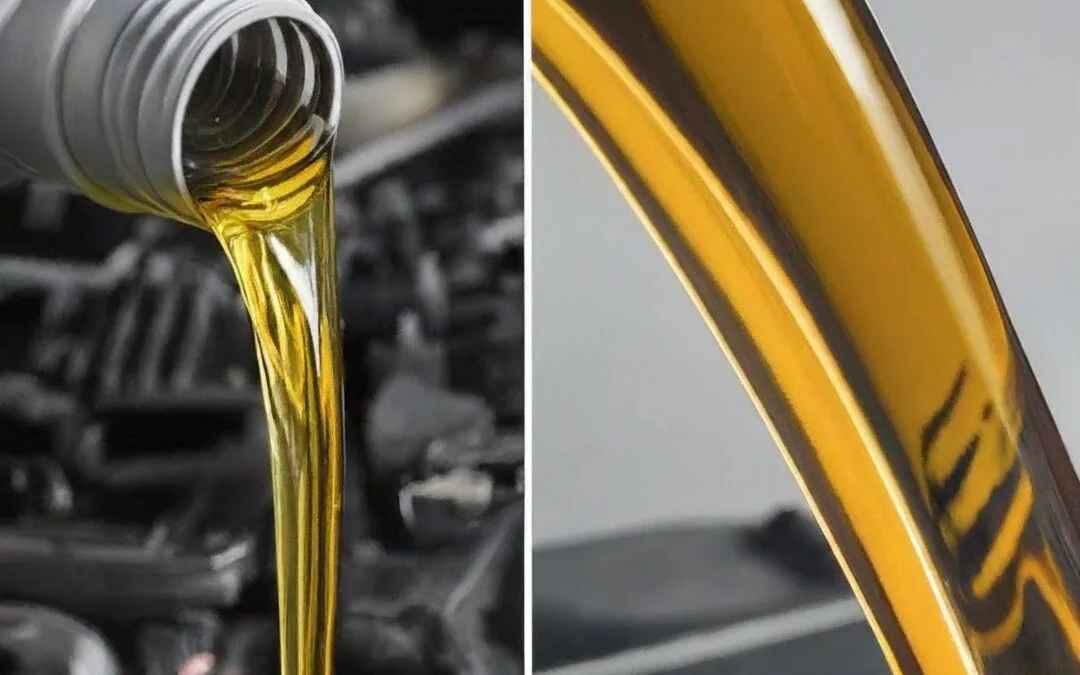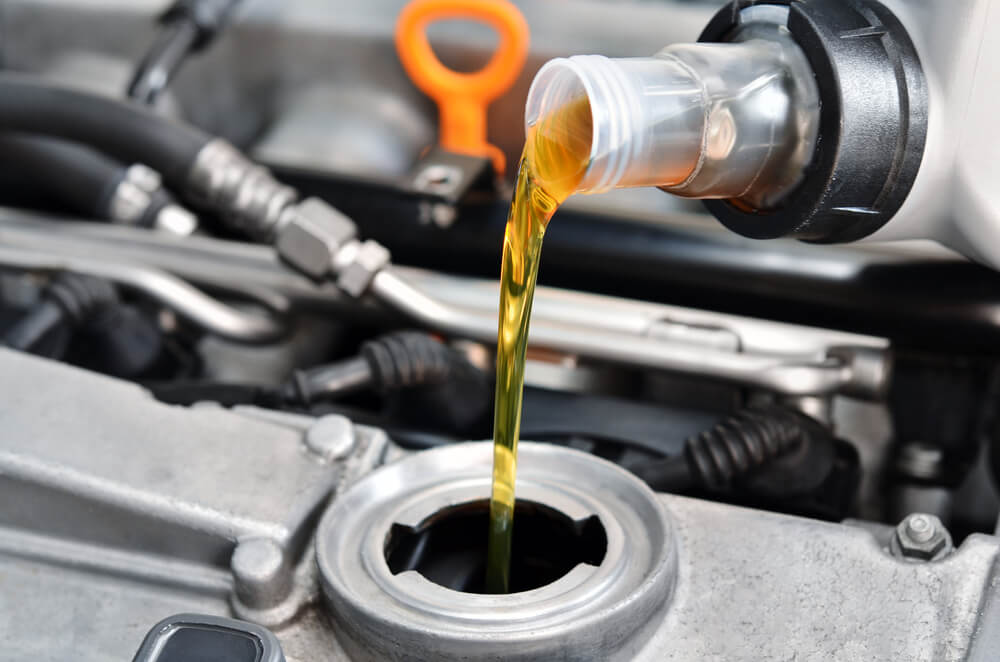Tittle “Can Motor Oil Soaked Rags Spontaneously Combust?”
Introduction:
The world of flammable hazards can sometimes hide in unexpected places, and one such danger is lurking in the seemingly innocent form of motor oil-soaked rags. Spontaneous combustion is a phenomenon that has the potential to turn these everyday items into fire hazards. In this blog, we’ll explore the science behind spontaneous combustion, the specific risks associated with motor oil-soaked rags, and most importantly, how to prevent such incidents. Understanding this hidden danger is not just about protecting your property; it’s about safeguarding lives and promoting responsible practices. So, let’s dive into the question: Can motor oil soaked rags spontaneously combust, and what can we do to stay safe?
Spontaneous Combustion: What is it?
Spontaneous combustion is a fascinating yet potentially hazardous phenomenon that occurs when a substance ignites and bursts into flames without an external heat source or an open flame. It might sound like something out of a science fiction novel, but spontaneous combustion is a real and scientifically documented occurrence. Understanding the science behind it is not only intriguing but also essential for safety and risk prevention.
The Science Behind Spontaneous Combustion:
At the heart of spontaneous combustion lies a complex set of chemical and physical processes. It typically involves three key elements:
- Fuel: A flammable substance, such as oil-soaked rags, hay, or even certain chemicals, serves as the fuel for the fire. These materials have the potential to release heat as they break down.
- Heat Generation: The fuel, over time, undergoes a slow oxidation process, releasing heat as a byproduct. This heat accumulates and raises the temperature of the surrounding environment.
- Insulation: The heat generated needs to be trapped in an insulated environment. This enclosure can be a pile of rags, a haystack, or any situation where heat cannot dissipate easily.
As the heat builds up within the confined space, it can reach the substance’s autoignition temperature—the point at which it spontaneously ignites. Once ignition occurs, a fire can rapidly develop, often with surprising intensity.
Common Materials Prone to Spontaneous Combustion:
Spontaneous combustion can potentially happen with various materials, some of which include:
- Oil-soaked rags: These are one of the well-known examples, particularly when used in woodworking or automotive maintenance.
- Hay and straw: Farmers must be cautious about hay bales, as they can generate enough heat to ignite if not stored properly.
- Certain chemicals: Some chemicals, when exposed to air or moisture, can generate heat and spontaneously combust.
Understanding the conditions and materials that contribute to spontaneous combustion is crucial for prevention. When handled correctly, these materials pose minimal risk. However, neglecting proper storage and disposal practices can lead to dangerous situations.
The Science Behind Spontaneous Combustion
A. Explore the Chemical Processes Leading to Spontaneous Combustion
Spontaneous combustion, a phenomenon that can turn the seemingly harmless into a fire hazard, is deeply rooted in the intricate world of chemical reactions. Understanding the underlying chemistry provides crucial insights into why spontaneous combustion occurs and how it can be prevented.
1. Oxidation Reactions: Spontaneous combustion often begins with slow oxidation processes. In materials like oily rags, oil and air combine over time, triggering a chemical reaction where the oil molecules break down. This oxidation reaction generates heat as a byproduct.
2. Exothermic Reactions: Oxidation reactions are exothermic, meaning they release heat. As the oxidation progresses, the heat produced accumulates within the material. It’s this accumulating heat that holds the key to spontaneous combustion.
B. Discuss the Role of Heat Generation and Ignition Source
Heat generation and ignition sources play pivotal roles in the spontaneous combustion process. While external ignition sources are absent in spontaneous combustion, the heat generated within the material itself is the catalyst for ignition.
1. Heat Accumulation: As the material oxidizes and heat is released, it accumulates within the substance. The enclosed environment, characteristic of spontaneous combustion situations, traps this heat.
2. Autoignition Temperature: For spontaneous combustion to occur, the material’s temperature must reach its autoignition temperature. This temperature threshold varies depending on the material but is the critical point at which ignition is spontaneous.
3. Ignition Phase: Once the material reaches its autoignition temperature, it undergoes the ignition phase. Ignition can occur abruptly, and in the absence of external flames or sparks, it’s a striking example of self-ignition.
C. Explain Why Certain Substances Are More Susceptible to Spontaneous Combustion
Not all materials are equally susceptible to spontaneous combustion. Some factors make specific substances, like oily rags, more prone to this phenomenon:
1. Flammable Nature: Materials with a high flammability, such as those soaked in flammable liquids like oil, are more susceptible to spontaneous combustion. The presence of easily ignitable substances accelerates the process.
2. Heat Insulation: The ability of a material to insulate heat is crucial. Materials that trap heat efficiently, often due to their density or configuration, create the conditions required for spontaneous combustion.
3. Porosity and Oxidation Rate: Materials with high porosity, allowing greater access to air, may experience accelerated oxidation and heat generation. This, combined with their insulation properties, heightens the risk of spontaneous combustion.
See the below video for better understanding:
Motor Oil Soaked Rags: Convenience and Caution
Motor oil-soaked rags are commonplace in many workshops and garages, often seen as convenient tools for cleaning, lubricating, or as a means to wipe away spills. However, these seemingly innocuous materials come with a hidden fire hazard. The presence of flammable motor oil, combined with certain conditions, can turn these rags into a potential source of spontaneous combustion, making it essential to exercise caution when handling and disposing of them.
Convenience in the Garage:
Motor oil-soaked rags serve various practical purposes, making them a staple in many automotive and mechanical workspaces. They can efficiently absorb excess oil, lubricate machinery, and maintain equipment. Their convenience lies in their ability to clean, all while making use of excess motor oil that might otherwise go to waste.
The Spontaneous Combustion Risk:
While motor oil-soaked rags are indeed useful, they carry an inherent risk. When these rags are used and then left in a confined space, the absorbed oil undergoes oxidation, releasing heat. If the conditions are right—a lack of ventilation and proper insulation—the heat can accumulate and reach the rags’ autoignition temperature, resulting in spontaneous combustion. This can lead to fires that may be dangerous and destructive.
Preventing Spontaneous Combustion:
Preventing spontaneous combustion with motor oil-soaked rags requires responsible practices:
- Proper Storage: Ensure used rags are stored in well-ventilated containers or metal bins designed for oily materials. Avoid piling them in a confined space.
- Prompt Disposal: Dispose of used rags promptly and safely. Consider using self-sealing, fire-resistant containers designed for oily waste.
- Awareness: Educate yourself and those working in your workspace about the risks associated with motor oil-soaked rags. Everyone should be aware of the signs of spontaneous combustion.
- Alternative Materials: Consider using disposable wipes or cloth materials designed for oily tasks. These materials pose a lower risk of spontaneous combustion.
- Reusing Rags: If reusing rags, wash and dry them thoroughly before storing them, reducing the risk of residual oil causing oxidation.
In summary, motor oil-soaked rags, while convenient, demand respect and careful handling due to their potential for spontaneous combustion. Responsible storage, disposal, and awareness of the risks associated with these rags are essential in safeguarding against the hidden fire hazard they present. Balancing their utility with a cautious approach ensures a safer and more productive workshop environment.
Preventing Spontaneous Combustion with Motor Oil Soaked Rags: A Critical Safety Imperative
Motor oil-soaked rags, while useful in many applications, come with a hidden fire hazard known as spontaneous combustion. To safeguard against this potentially dangerous phenomenon, it’s crucial to adopt proactive measures that minimize the risk associated with these materials. Preventing spontaneous combustion with motor oil soaked rags is not just a safety recommendation; it’s a critical imperative for anyone working with such materials. Here are key strategies to ensure safety in the workshop:
1. Proper Storage:
Proper storage of motor oil-soaked rags is paramount. Ensure they are stored in well-ventilated containers or metal bins specifically designed for oily materials. These containers should be fire-resistant and equipped with self-sealing lids. Avoid piling or crumpling the rags in a confined space, as this reduces ventilation and increases the risk of heat accumulation.
2. Prompt Disposal:
Disposing of used rags promptly is essential. Consider using designated self-sealing containers designed for oily waste. These containers not only reduce the risk of spontaneous combustion but also offer a safe way to collect and transport used rags for proper disposal or recycling.
3. Awareness and Education:
Educating yourself and everyone working in your workspace about the risks associated with motor oil-soaked rags is critical. Make sure that all team members are aware of the signs and conditions that can lead to spontaneous combustion. Regular training and reminders about proper rag handling can significantly reduce the likelihood of accidents.
4. Alternative Materials:
Consider using alternative materials for tasks that involve oil and other flammable substances. Disposable wipes or cloth materials specifically designed for oily applications offer a lower risk of spontaneous combustion. While these materials may require disposal after use, they provide a safer alternative, particularly in situations where used rags tend to accumulate.
5. Reusing Rags Safely:
If reusing rags is a common practice in your workspace, ensure that they are washed and dried thoroughly before storing them. Residual oil on rags can accelerate oxidation and heat buildup. Properly cleaned and dried rags reduce the risk of spontaneous combustion.
6. Regular Inspection:
Periodically inspect your storage containers for used rags, ensuring that they are sealed and free from potential ignition sources. Maintain a clutter-free and well-ventilated workspace to reduce the risk of heat accumulation.
Case Studies: Notable Incidents of Spontaneous Combustion
Spontaneous combustion is not just a theoretical concept; it’s a real phenomenon with tangible consequences. Over the years, there have been notable incidents where seemingly innocuous materials ignited unexpectedly, leading to fires and, in some cases, significant damage. These case studies serve as cautionary tales, emphasizing the importance of understanding and preventing spontaneous combustion.
1. The Haystack Inferno:
In agriculture, haystacks are notorious for their susceptibility to spontaneous combustion. A case in point is the Haystack Inferno of 1955 in Canada. A massive haystack, weighing thousands of pounds, suddenly ignited, and the fire raged for weeks, consuming valuable hay and causing extensive financial losses.
2. The Textile Mill Blaze:
In textile mills, cotton fibers are known to pose a spontaneous combustion risk. In 2016, a textile mill in India suffered a catastrophic fire incident. The ignition source was traced back to cotton waste that had been improperly stored, eventually reaching its autoignition temperature and setting the entire mill ablaze.
3. Workshop Fire Caused by Oily Rags:
In the realm of automotive and woodworking workshops, a common risk factor is motor oil-soaked rags. A 2019 incident in the United States saw a workshop go up in flames due to improperly discarded oily rags. The fire caused extensive damage to the property, highlighting the dangers of not following safe disposal practices.
4. The Sawdust Ignition:
Sawdust, often abundant in woodworking environments, is another substance prone to spontaneous combustion. In 2020, a woodworking shop in Europe experienced an unexpected fire that started from a pile of sawdust. The fire caused not only property damage but also raised safety concerns for workers.
These case studies underscore the very real and destructive potential of spontaneous combustion. They serve as powerful reminders of the importance of responsible storage, handling, and disposal practices for materials prone to this phenomenon. Prevention is the key to avoiding such incidents and protecting lives, property, and valuable resources.
Safety Measures and Best Practices for Spontaneous Combustion Prevention
Preventing spontaneous combustion is a matter of utmost importance in environments where flammable materials are present. By adopting safety measures and best practices, individuals and industries can significantly reduce the risk of accidents, fires, and property damage associated with this phenomenon. Here are the key measures to consider:
1. Proper Storage:
Storing materials prone to spontaneous combustion in well-ventilated areas is essential. Avoid stacking or piling them in confined spaces, which can trap heat and increase the risk of ignition. Use designated storage containers with self-sealing lids, especially for oily rags or materials susceptible to spontaneous combustion.
2. Prompt Disposal:
Dispose of used or waste materials promptly. Self-sealing containers designed for oily waste offer a safe way to collect and transport such materials for proper disposal or recycling. Do not allow used materials to accumulate in work areas, as this increases the risk of heat buildup.
3. Awareness and Training:
Educate everyone working in environments where spontaneous combustion risks exist. Ensure that all team members are aware of the signs and conditions that can lead to spontaneous combustion. Regular training and reminders about proper handling and storage practices can significantly reduce the likelihood of accidents.
4. Safe Alternatives:
Whenever possible, consider using alternative materials that pose lower risks of spontaneous combustion. Disposable wipes or cloth materials specifically designed for tasks involving flammable substances can offer a safer option. These materials often reduce the risk of heat generation and ignition.
5. Safe Reuse Practices:
If reusing materials, ensure they are thoroughly cleaned and dried before storage. Residual substances can accelerate oxidation and heat buildup. Properly cleaned and dried materials reduce the risk of spontaneous combustion during storage.
6. Regular Inspection:
Periodically inspect storage containers for used or waste materials, ensuring that they are sealed and free from potential ignition sources. Maintain a clutter-free and well-ventilated workspace to reduce the risk of heat accumulation.
7. Fire Safety Precautions:
Always have adequate fire safety measures in place, such as fire extinguishers, fire blankets, and smoke detectors, in environments where spontaneous combustion risks exist. Ensure that team members are familiar with emergency response procedures in case of a fire.
8. Reporting and Documentation:
Establish a system for reporting and documenting incidents, near misses, or any signs of heat generation or unusual conditions. This documentation can help identify potential risks and improve safety measures.
Conclusion:
In summary, this blog has explored the hidden dangers of motor oil-soaked rags and the risk of spontaneous combustion. We’ve delved into the science behind this phenomenon, discussed notable incidents, and emphasized the importance of prevention.
It’s crucial to recognize that understanding and acknowledging this risk is paramount. Spontaneous combustion is a real threat that can lead to devastating consequences for both homes and workplaces.
As a final word, we strongly encourage readers to prioritize safety by following best practices for the handling, storage, and responsible disposal of motor oil-soaked rags. By doing so, we can protect our environments, safeguard our properties, and ensure the well-being of ourselves and those around us. Safety and responsibility should always be at the forefront when working with materials prone to spontaneous combustion.
Useful links:
https://www.newpig.com/absorbent-training-part-6-spontaneous-combustion/c/8036?show=All
Frequently Asked Questions (FAQ) about Can Motor Oil Soaked Rags Spontaneously Combust
1. What is spontaneous combustion, and how does it relate to motor oil-soaked rags?
- Spontaneous combustion is the ignition of a material without an external heat source. Motor oil-soaked rags can undergo this phenomenon when the absorbed oil oxidizes and generates heat, potentially leading to self-ignition.
2. Can any type of oily rag spontaneously combust, or are there specific factors that contribute to it?
- While any oily rag carries some risk, factors like the type of oil, the amount absorbed, storage conditions, and ventilation play significant roles in determining the likelihood of spontaneous combustion.
3. What are the signs that motor oil-soaked rags might be at risk of spontaneous combustion?
- Signs include an acrid smell, increased warmth, or discoloration of the rag. If you notice any of these, it’s crucial to take safety measures promptly.
4. How can I prevent motor oil-soaked rags from spontaneously combusting?
- Proper storage in well-ventilated, fire-resistant containers, prompt disposal, education, and awareness are key. Following best practices for safety and responsible disposal is essential.
5. Are there safe alternatives to using motor oil-soaked rags for tasks like cleaning and lubrication?
- Yes, there are safer alternatives, including disposable wipes or cloth materials specifically designed for tasks involving flammable substances. These materials offer lower risks of spontaneous combustion.
6. What should I do if I suspect a motor oil-soaked rag has spontaneously combusted?
- Evacuate the area immediately, and call emergency services. Do not attempt to extinguish the fire unless it is safe to do so with the appropriate fire extinguishing equipment.
7. Can motor oil-soaked rags be recycled or disposed of safely?
- Yes, they can be recycled or disposed of safely by following proper procedures. It’s essential to use designated containers for oily waste and consult local guidelines for disposal options.
8. Is spontaneous combustion with motor oil-soaked rags a common occurrence?
- While not extremely common, it is a real and documented phenomenon. Awareness and preventive measures are essential, especially in settings where these materials are used regularly.





Leave a Reply